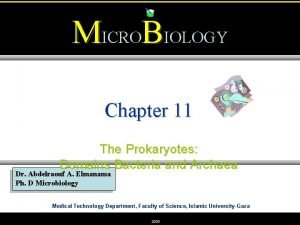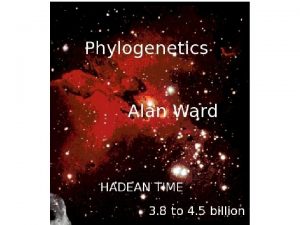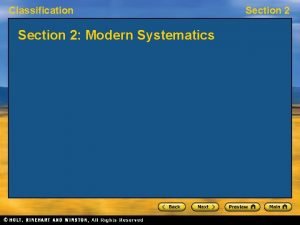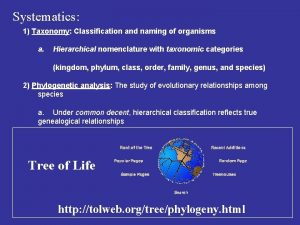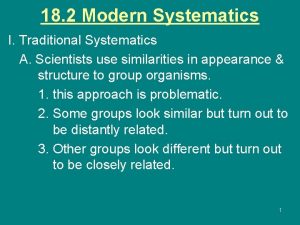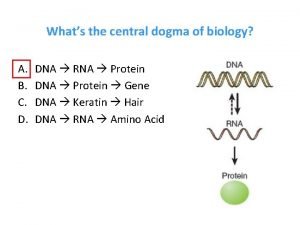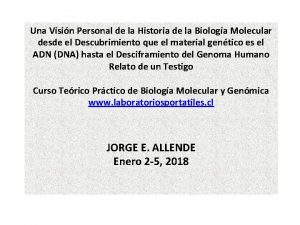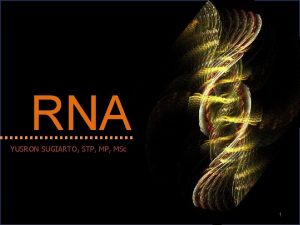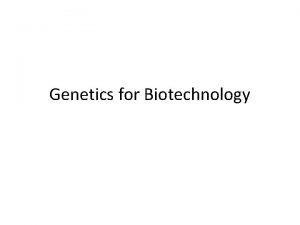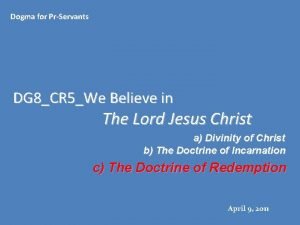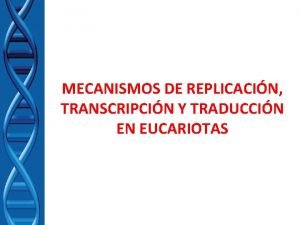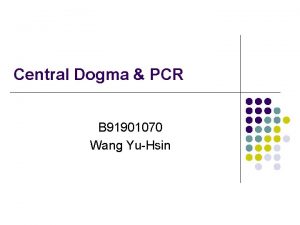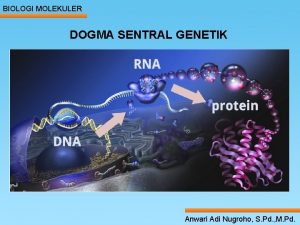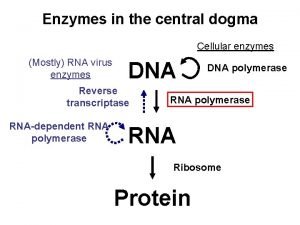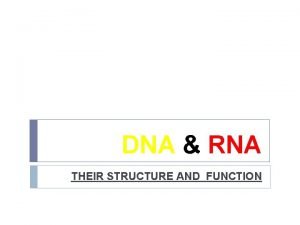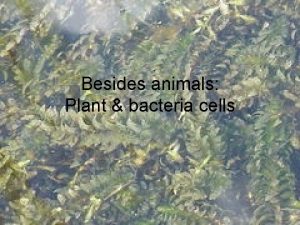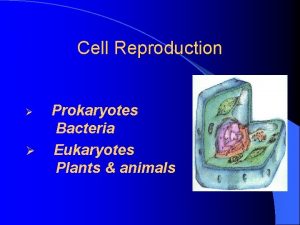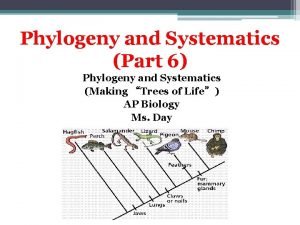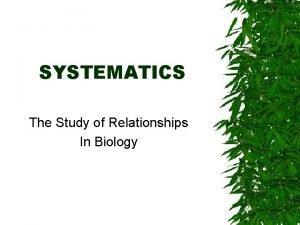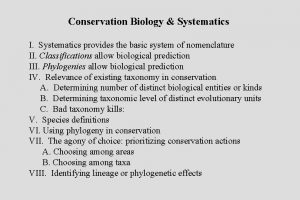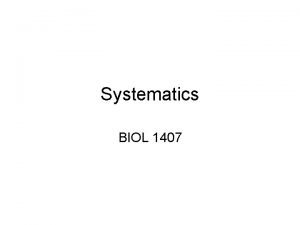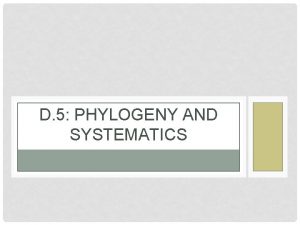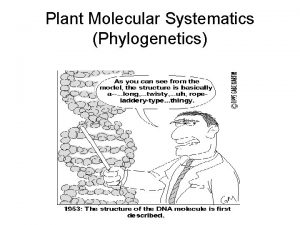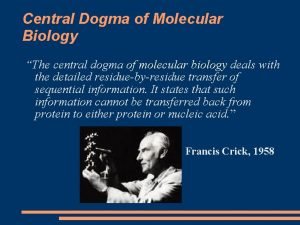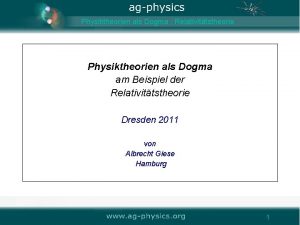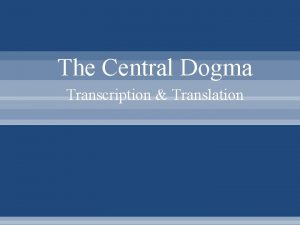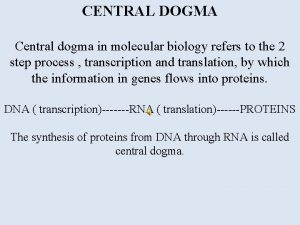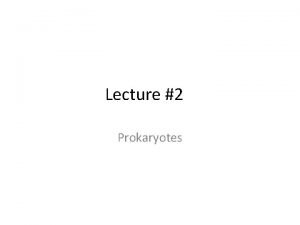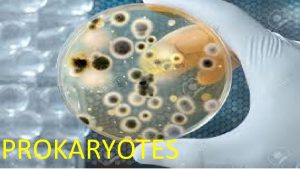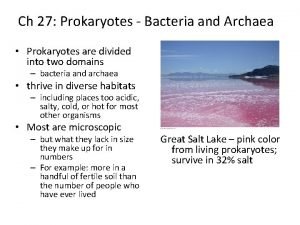Domains Dogma Systematics of Prokaryotes Focus on animals

























- Slides: 25

Domains & Dogma

Systematics of Prokaryotes • Focus on animals and plants – History limited to 20% of evolutionary time • How to classify prokaryotes? Limited in morphological characters

Gram Stain and Structure

r. RNA unlocks the domains Emile Zuckerkandl (1922 -2013); Austria & USA. Molecular biology and molecular clock Linus Carl Pauling (1901 -1994) USA Founder of fields like quantum chemistry and molecular biology Suggested that a tree of life might be generated by comparing sequences of biopolymers like RNA Zuckerkandl and Pauling

Ribosomal Structure Two subunits

Ribosomal subunits= r. RNA molecules + proteins

Prokaryotes Eukaryotes

What’s the ‘S’? • Svedberg units: a measure of how quickly particles sediment in an ultracentrifuge

What’s the ‘S’? • Svedberg units: a measure of how quickly particles sediment in an ultracentrifuge • Larger the particle, the greater its S value • Smaller subunit of a ribosome sinks slower than the larger subunit

Why then does 5 S + 23 S = 50 S?

Why then does 5 S + 23 S = 50 S? Shape AND size determine sedimentation rate…

Ribosomal RNA Molecules • Components of the ribosomes of ALL ORGANISMS • Changes in r. RNA nucleotide sequence indicative of evolutionary history SSU r. RNA

Carl Richard Woese 1928 -2012, USA; Developed system based on 16 S r. RNA in 1977

Carl Woese and George Fox 1977

A modification of Woese et al. (1990) from Brock et al. (1994).

Eubacteria Ø>9 Kingdoms ØSame type of ribosomes ØPolysaccharide of outer wall made of Murein ØMost groups involved in global nutrient cycling ØMany of economic importance ØDisease ØOther functions (e. g. antibiotic producers)

Archaea • Differ from the Eubacteria – – Form of ribosomes No murein Different lipids Different RNA polymerase

Two different supertrees generated by ML methods for complete genomes of 45 taxa. Daubin et al. 2002

Ciniglia et al. 2004

Lang et al. 2013 Using 24 genes and 3000 taxa

Raymann et al. 2015 Support for a twodomain system. Eukayotes arose from within the Archaea and sister to the Lokiarchaeota.

Spang et al. 2015 Colored dots indicate distribution of Eukaryotic Signature Proteins

Forterre 2015 pg=peptidoglycan LUCA=Last universal common ancestor LBCA=Last bacterial common ancestor LACA=Last archaeal common ancestor LARCA=Last Arkarya common ancestor FME=First mitochondriate eukaryote Figure 3. Schematic universal tree updated from Woese et al. (1990) LECA=Last eukaryotic common ancestor SARP=Stramenopiles, alveolates, rhizobians, plantae

Three Domains Modified from Mc. Inerney et al. 2015 Eukaryotes Early Eocyte Ring of Life Argued that the domain concept was indefensible because eukaryotes are not monophyletic unless we consider all of life

Life’s history is complex and we should not try to simplify it to suit our need for orderly nomenclatural systems. -Mc. Inerney et al. 2015
 Betaproteobacteria
Betaproteobacteria Systematics deals with
Systematics deals with Systematics vs taxonomy
Systematics vs taxonomy Modern systematics try to group organisms based on
Modern systematics try to group organisms based on Systematics vs taxonomy
Systematics vs taxonomy Traditional systematics
Traditional systematics Cost focus and differentiation focus
Cost focus and differentiation focus Business level strategy cost leadership
Business level strategy cost leadership Actor focus vs object focus
Actor focus vs object focus Prolepsis
Prolepsis Consumer producer decomposer
Consumer producer decomposer Parasitic food chain
Parasitic food chain Animals that eat both plants and animals
Animals that eat both plants and animals Https//a-z-animals.com
Https//a-z-animals.com Protein synthesis
Protein synthesis Polirribosomas
Polirribosomas Dogma msc
Dogma msc Central dogma
Central dogma Isaac repentance dogma
Isaac repentance dogma Control de la transcripción
Control de la transcripción Central dogma
Central dogma Konsep dogma sentral
Konsep dogma sentral Enzymes involved in central dogma
Enzymes involved in central dogma Central dogma diagram
Central dogma diagram Prenilasyon
Prenilasyon Replikasyon transkripsiyon translasyon
Replikasyon transkripsiyon translasyon
